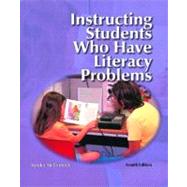
Note: Supplemental materials are not guaranteed with Rental or Used book purchases.
Purchase Benefits
What is included with this book?
| PART I FOUNDATIONS OF REMEDIAL AND CLINICAL READING INSTRUCTION | 1 | (66) | |||
|
2 | (26) | |||
|
28 | (20) | |||
|
48 | (19) | |||
| PART II ASSESSMENT | 67 | (114) | |||
|
68 | (26) | |||
|
94 | (22) | |||
|
116 | (34) | |||
|
150 | (31) | |||
| PART III INSTRUCTIONAL INTERVENTIONS | 181 | (234) | |||
|
182 | (38) | |||
|
220 | (36) | |||
|
256 | (44) | |||
|
300 | (38) | |||
|
338 | (38) | |||
|
376 | (39) | |||
| PART IV READING INSTRUCTION FOR SPECIAL POPULATIONS | 415 | (72) | |||
|
416 | (38) | |||
|
454 | (33) | |||
| Appendix A Supplementary Test Bank: Intelligence Tests | 487 | (2) | |||
| Appendix B Outlines for Preparing Case Reports | 489 | (6) | |||
| Appendix C A Compilation of Test Banks From the Text | 495 | (7) | |||
| References | 502 | (19) | |||
| Index | 521 |
The New copy of this book will include any supplemental materials advertised. Please check the title of the book to determine if it should include any access cards, study guides, lab manuals, CDs, etc.
The Used, Rental and eBook copies of this book are not guaranteed to include any supplemental materials. Typically, only the book itself is included. This is true even if the title states it includes any access cards, study guides, lab manuals, CDs, etc.